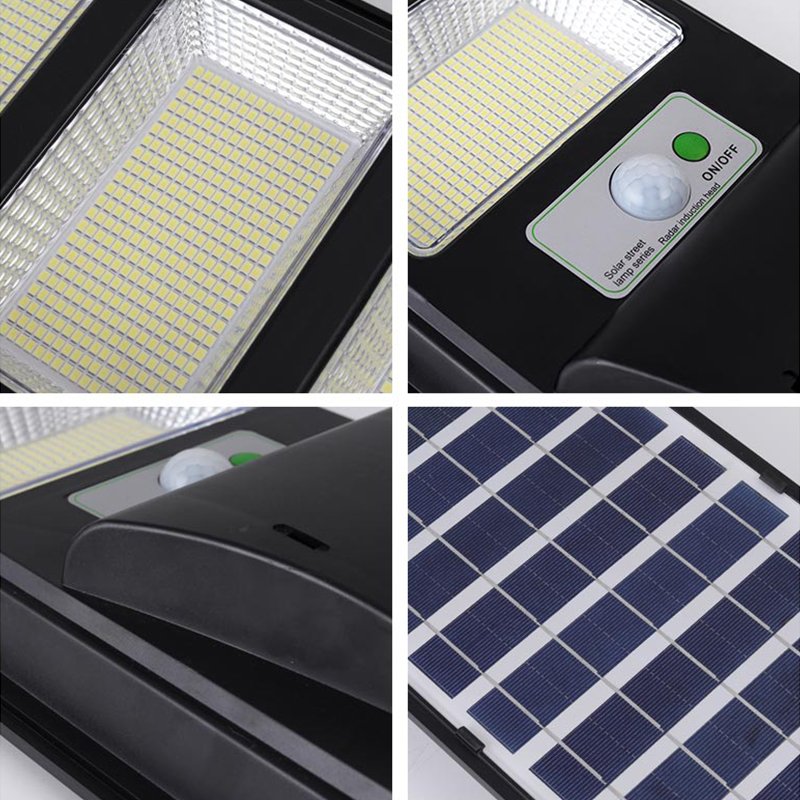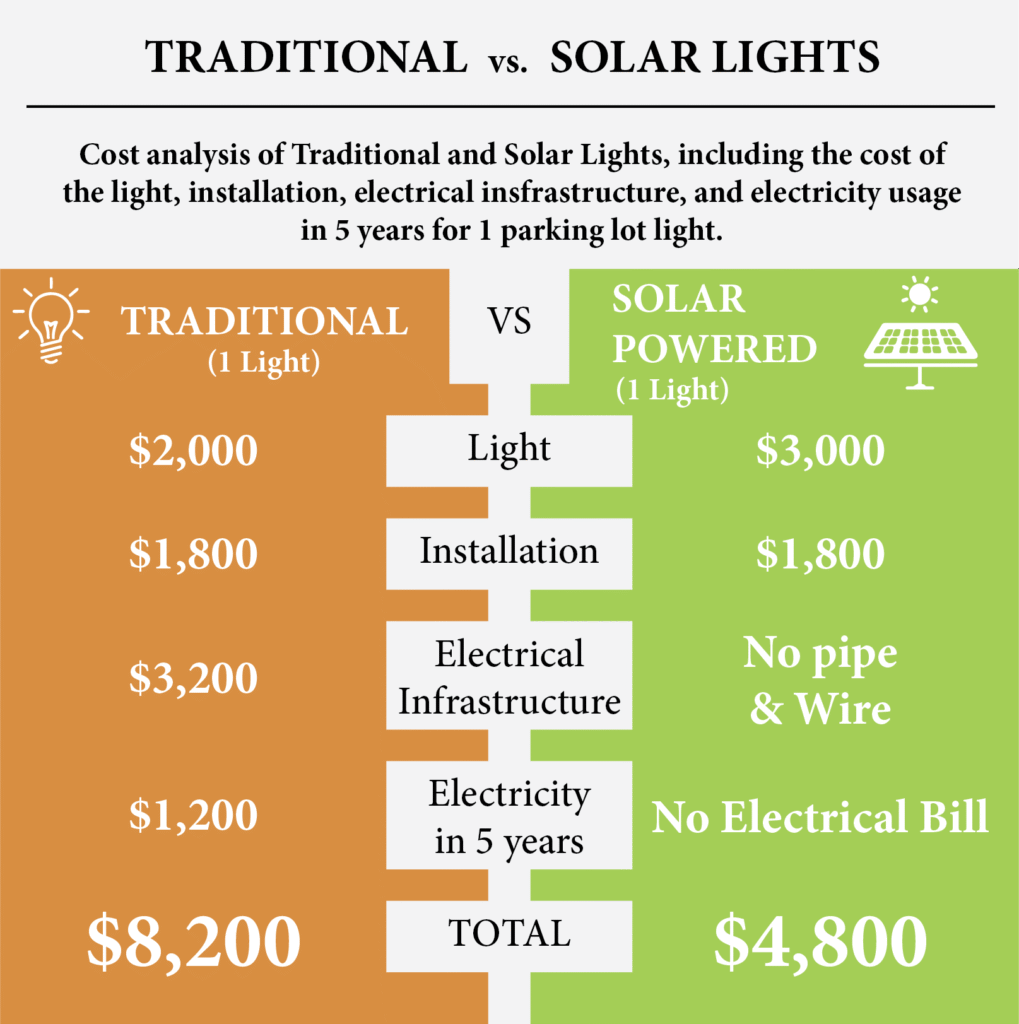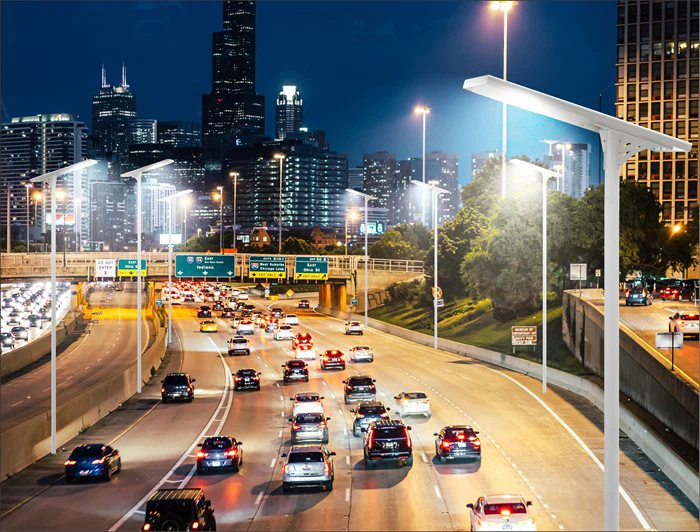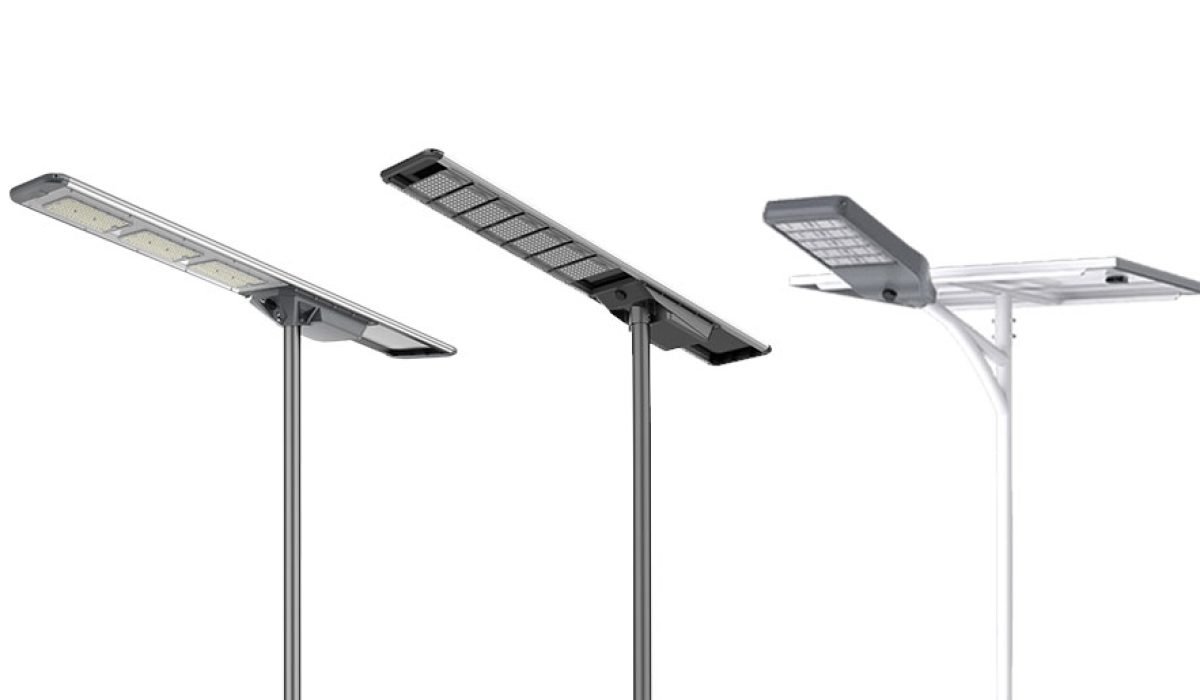The cost of a solar street light mainly depends on three things — the battery type and capacity, the solar panel wattage, and the controller efficiency. These components together account for more than 70% of total price, directly influencing performance, lifespan, and brightness stability. Choosing higher-quality batteries and MPPT controllers may raise initial costs but deliver far lower maintenance and replacement expenses over time.
When you look at solar street light prices, the range can feel confusing — from $40 to $400 per unit, or even more for project-grade systems. Over my 15 years working across African solar projects, I’ve seen buyers struggle with one question again and again: why are some solar street lights so cheap, while others cost two or three times more?
Let’s break down exactly what drives the cost of solar street lights — component by component — and how to make sure you’re not overpaying for poor-quality parts.
What Determines the Solar Street Light Price?
Solar street light pricing mainly depends on the quality of core components, system configuration, and installation labor.

Most buyers, especially those new to solar procurement, only look at wattage or brightness. But that’s misleading. The real cost comes from what’s inside the system — the battery chemistry, the controller type, and even the casing material.
If you understand these cost drivers, you can set a more accurate budget and avoid hidden expenses later on, like premature battery failure or underpowered panels that can’t support full-night lighting.
Solar Street Light Cost Breakdown by Component
What Are the Main Components and Their Roles?
Every solar street light, from a small retail unit to a 12-meter highway model, shares five core components. Each plays a role not only in performance but also in total price.
- Solar Panel: Converts sunlight to electricity. Larger wattage and higher efficiency cells (like mono-crystalline) cost more but deliver better power output.
- Battery: Stores energy for night operation. Battery chemistry (Li-ion vs. GEL vs. Lead-acid) and capacity are the biggest cost factors.
- LED Lamp: Determines light intensity and efficiency. Higher lumen-per-watt LEDs cost more but use less energy.
- Controller: Regulates charging and discharging. MPPT controllers are pricier than PWM but 20–30% more efficient.
- Casing & Hardware: Protects all components. Material choice — plastic, aluminum, or galvanized steel — directly affects lifespan and cost.
- Labor & Packaging: Includes assembly, QC, installation, and export packaging — often overlooked but significant in total pricing.
| Component | Typical Cost Share |
|---|---|
| Solar Panel | 25% |
| Battery | 30% |
| Controller | 15% |
| LED Lamp | 10% |
| Outer Casing | 10% |
| Labor & Packaging | 10% |
Percentages vary slightly based on material grade and design complexity, but the battery and panel together often make up over half the system cost.
Retail Solar Street Light Price Analysis

What Factors Matter Most for Small Buyers?
Retail or “all-in-one” solar lights — the ones sold per piece for households or small estates — use compact 3V or 6V systems. They look simple, but small doesn’t always mean cheap in the long run.
For retail buyers, the battery quality, solar panel wattage, and housing durability are the biggest factors influencing price.
| Component | Example Spec | Approx. Cost Share |
|---|---|---|
| Solar Panel | 6V / 10W | 25% |
| Battery | 3.2V / 10Ah | 30% |
| Controller | 3V Basic | 10% |
| LED Chip | 300 Lumens | 15% |
| Outer Casing | Plastic or Metal | 10% |
| Packaging | Box & Filler | 10% |
💡 Tip: Always check both the battery capacity (Ah) and solar panel wattage (W). Some products exaggerate “watt” ratings that don’t match real output. If the battery is too small, light duration will drop below 6 hours even on new units.
Another thing — many cheaper lights use recycled lithium cells. They work at first but degrade quickly, losing brightness within months. Paying 20% more upfront often saves 50% in maintenance or replacements later.
Project-Based Solar Street Light Price Analysis
Which Factors Influence Project Costs the Most?
For EPC and government projects, the cost structure looks completely different. These systems use 12V or 24V batteries, 100W–150W panels, and metal poles. Here, technical quality and logistics both drive price.
| Component | Example Spec | Approx. Cost Share |
|---|---|---|
| Solar Panel | 36V / 100W | 20% |
| Battery | 12V / 50Ah (Lithium) | 35% |
| MPPT Controller | 12V/24V | 15% |
| LED Module | 2000 Lumens | 15% |
| Metal Casing & Pole | Galvanized Steel | 10% |
| Installation & Misc. | Labor, Wiring | 5% |
💡 Tip: Always verify controller type before purchase. MPPT controllers extract up to 98% efficiency from panels, while PWM rarely exceeds 75–80%. For long-term operation, this makes a huge cost difference.
From my experience in Uganda and Kenya, logistics can account for up to 10% of project cost, especially for remote installations. Packing, freight, customs, and local assembly labor all add up — sometimes more than buyers expect.
Hidden Costs in Solar Street Light Projects

What Are the Commonly Overlooked Expenses?
Even experienced project managers sometimes forget about the “silent” costs that appear after the quotation stage. These usually include:
- Freight and Import Duties: Vary by country; may add 5–15% to total cost.
- Export Packaging: Wooden crates or reinforced cartons for long-distance transport.
- Local Labor: Installation, foundation works, and electrical connections.
- Spare Parts & Maintenance: Controllers, batteries, or LED modules that need future replacement.
- After-Sales Support: Service response time, warranty logistics, and technician travel.
I’ve seen cases where the CIF cost looked competitive, but after customs and site labor, total expenses increased by almost 25%. Always request a landed cost estimation, not just ex-factory pricing.
How to Choose the Right Solar Street Light for Your Budget

How Can You Match Performance with Cost?
Selecting the right system is about balance — between upfront price and long-term reliability.
Here’s my practical checklist when helping clients design solar street lighting for municipalities or housing estates:
- Match System Voltage to Local Sunlight Hours
For areas with shorter sunlight days (like Rwanda’s highlands), go with larger panels or higher voltage systems. - Balance Price vs. Performance
Don’t always go for the cheapest. Look at battery cycle life — a 2000-cycle lithium battery easily outlasts a cheaper 500-cycle option. - Verify All Key Specifications
Check datasheets, not just packaging labels. Real capacity and wattage matter more than marketing watt numbers. - Request a Full Component List Before Purchase
Ensure your supplier discloses exact brands or models of the battery, controller, and LED chips. - Ask About Warranty and Local Support
A strong supplier will provide not just hardware, but also technical training or installation guidance.
Conclusion: Which Factors Affect Solar Street Light Cost the Most?
After hundreds of tenders and installations, the answer is clear:
Battery, Solar Panel, and Controller account for the largest share of the total cost — and the biggest impact on performance.
If you compromise on any of these three, maintenance costs will eventually catch up. On the other hand, choosing high-quality components upfront ensures years of stable lighting, lower total cost of ownership, and stronger project ROI.
Remember — price isn’t just what you pay; it’s what you keep running every night.
Key Takeaway:
Understanding where your money goes in a solar street light helps you make smarter, data-backed decisions. Whether you’re buying a few retail units or managing a national lighting program, cost transparency and component quality will always decide your success.


